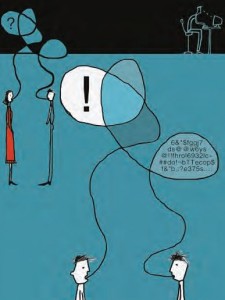Multidimensional interactions have altered the basic rules of communication
Social media has drastically changed how we communicate. Not too long ago, we communicated through the mail, on a land-line telephone, and in person. Today, we send text messages; leave voice messages; use instant messenger; send emails; talk through headphones, cell phones, and online video  phones; and, of course, interact through the Internet where a plethora of social media tools has redefined communication.
phones; and, of course, interact through the Internet where a plethora of social media tools has redefined communication.
Such a redefinition has had an enormous effect. The entire paradigm of social media has altered the basic rules of communication, especially between business and their audiences. The one-way communication methods of the recent past—business-to-customer and business-to-business—have been replaced by a more robust multidimensional communication model. That model is collectively called social media (also referred to as Web 2.0).
The rules of social media. To communicate effectively in the social media world means understanding the new rules of the road.
People want:
Continue reading Social Media and Its Effect on Communication







